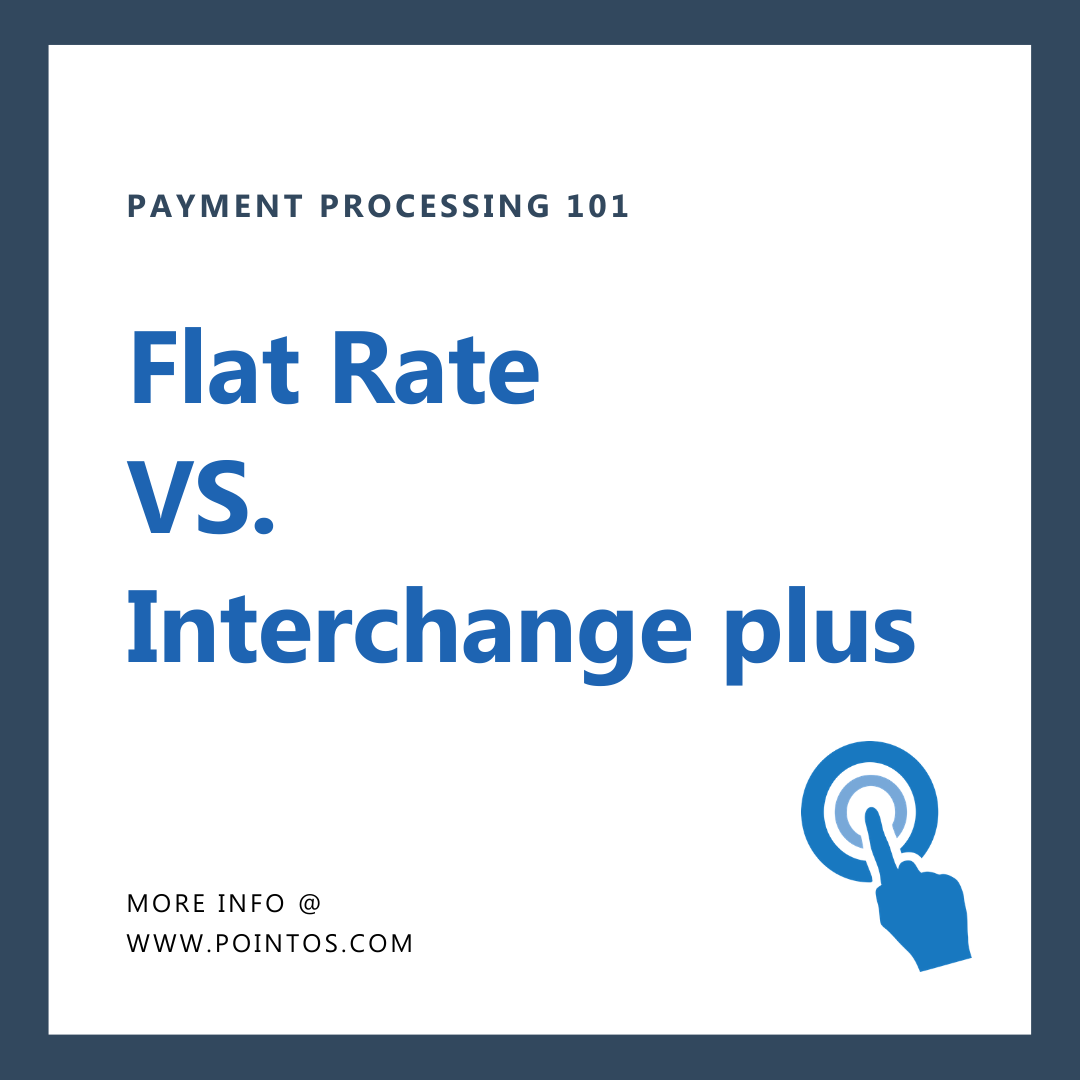Payment processing 101:Flat Rate vs Interchange Plus

Choosing the right credit card processor for your business can be a difficult task, especially when there are a variety of factors to consider. At the top of this list are the different pricing models payment processors can offer-some being more transparent than others.
If you are unaware of what you need to look out for, you could be costing your business more money than is necessary. To understand how payment processing affects your business’ bottom line, you need to look more closely at your processing rates to understand not just the rate alone, but also the pricing model that shapes this rate and which can either work to your benefit or against it.
The two most common payment processing pricing models are flat rate and interchange plus. While seemingly simple enough, truly understanding the two can be enough to make you scream.
So that’s where we come in.
We’ve laid out the important pieces of this daunting puzzle below so you can make the right choice for your business.
First & foremost: let’s find out who’s involved?
Behind every credit card swipe you will find the following involved:
Issuing Bank– this is the financial institution that issues a credit card to a consumer on behalf of the credit card company. For example, Chase, Citibank, and Wells Fargo etc.
Credit Card Associations– These are the companies that create credit cards. Examples include Visa, Mastercard, American Express and Discover.
The Acquirer– Most commonly referred to as the “processor,” this is the middleman that processes the credit or debit card payments on behalf of a merchant. The acquirer communicates with the issuing bank to approve or decline a credit card transaction. These are also called merchant service providers (MSPs) or Independent Sales Organizations (ISOs).
The basics of credit card fees:
Wholesale Rate – The wholesale rate, also known as the interchange rate, is a fixed per transaction percentage and is set by both the issuing banks and the credit card companies like MC and Visa. This makes this aspect of the rate non-negotiable and standardized for all merchants. The rate does however differ depending on the type of transaction. For example, a typed-in transaction will always have a higher fee than a swiped one.
Processor Markup – This is a per transaction fee that processors will add on top of the interchange rate. This becomes the “plus” in interchange plus. Usually, it’s around $0.10 per transaction, but this can vary between processors and transaction types. A company like PointOS works with businesses by negotiating on their behalf to provide lower mark ups.
Now we move onto comparing the two most popular processing rate models.
Flat Rate Pricing
Flat rate pricing charges merchants the same fee regardless of the card type and wholesale rate. This means that your rate is always the same, making flat rate simpler than interchange (which we will talk about next). The simplicity of this model is appealing to a lot of restaurant owners, but it is important to note that flat rate also has its downsides. Depending on the cards you process most, flat rate processing can end up costing you more. Whether you process a low-fee debit card or high-fee rewards credit card, your rate will always be the same. In some cases, specifically in the case of high-fee cards, this will work to your advantage, while debit cards could end up costing you more than they would on interchange.
Interchange Plus Pricing
Interchange plus pricing, also known as cost-plus, is a transparent pricing model that helps you understand the real cost of credit card processing to get the lowest possible rate. Cost-plus pricing is based on the actual interchange rate plus a markup the processor charges. The “plus” component of interchange plus pricing may be a percentage or a flat fee per transaction.
With interchange plus pricing, you will pay a different fee for each type of card. Unlike flat rate processing, which charges the same rate for all card types, interchange offers lower rates for low-fee card types such as debit cards, and higher rates for high-fee card types like Amex. This pricing method may seem a bit more complicated, but it actually helps you to better understand the true cost of merchant services by showing the breakdown of your rate and what portion of that goes to your payment processor.
In the past, interchange plus processing was only offered to high-volume merchants, but it’s now available to even new and small businesses. Now that you have the option to choose, it’s time for you to decide which model will work best for your business. PointOS offers free rate consultations with payments experts who can walk you through your current statement and help you explore the most cost-effective option for your business. To get you own individualized statement review with a PointOS Payments expert, just email [email protected] or call 857-250-2719.
You can also find out more on how PointOS Payments can save on your bottom line here.
Like our stories or want to hear more?
Drop us a line @ [email protected].
See you next week!
Your devoted hostess,
Brittany


